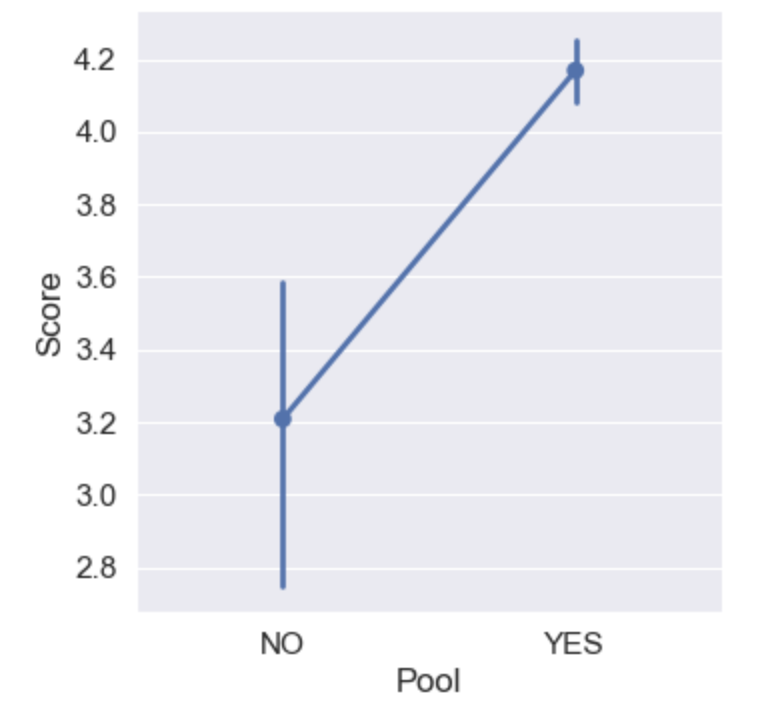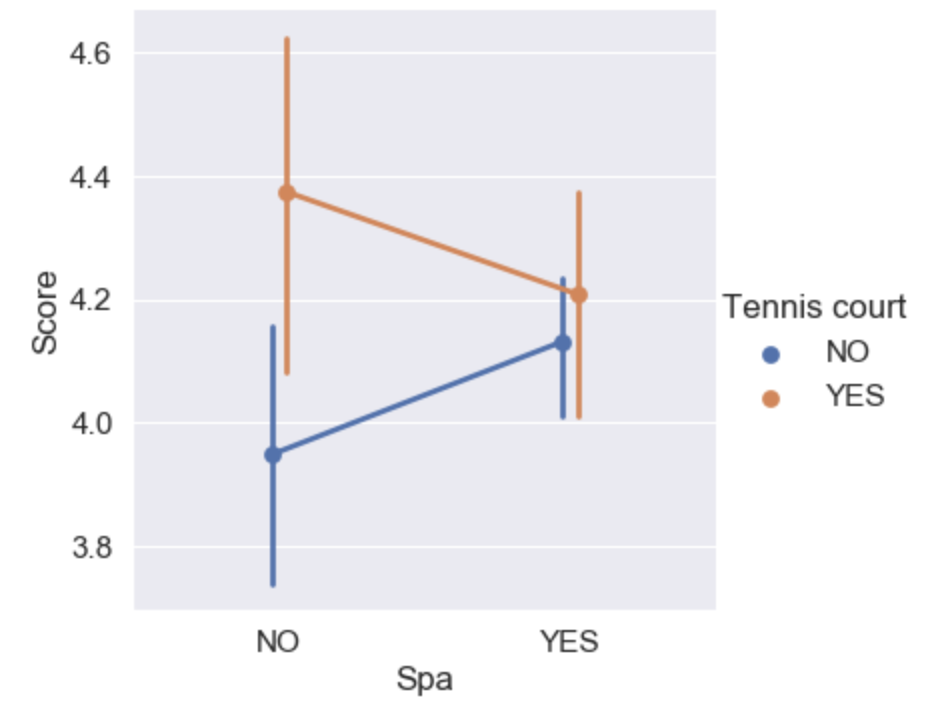Point and count plots
Working with Categorical Data in Python

Kasey Jones
Research Data Scientist
Point plot example
sns.catplot(x="Pool", y="Score", data=reviews, kind="point") # <--- updated

Bar plot vs. point plot
Bar plot

Point plot

Point plot with hue
sns.catplot(x="Spa", y="Score", data=reviews, kind="point",
hue="Tennis court", dodge=True # < --- New Parameter!
)

Using the join parameter
sns.catplot(x="Score",
y="Review weekday",
data=reviews,
kind="point",
join=False # < --- New!
)

One last catplot type
sns.catplot(x="Tennis court", data=reviews, kind="count", hue="Spa")

Time to practice!
Working with Categorical Data in Python

